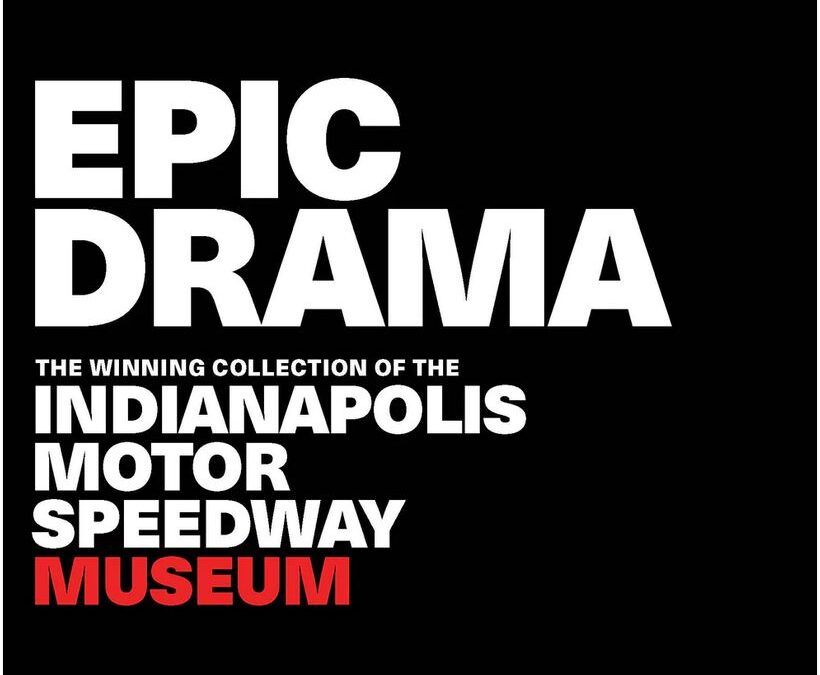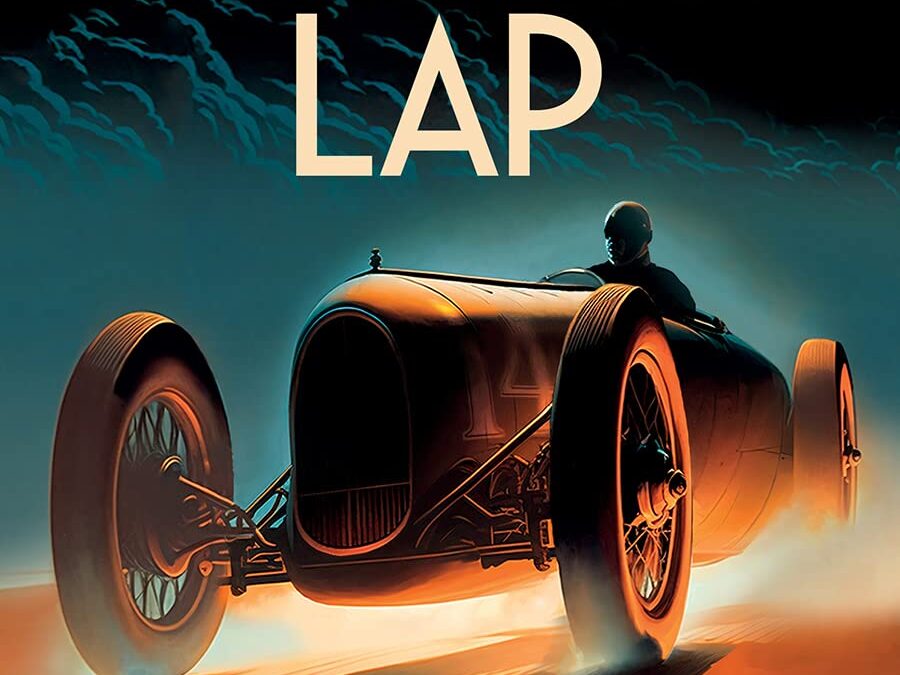
The Last Lap is a gripping inquest into the fast life and mysterious death of racing driver Pete Kreis, infamously killed in practice at the celebrated 1934 Indianapolis 500. In a compelling narrative that reads like a novel, author William Walker’s lifelong obsession with Kreis’s mysterious demise has created a rich story line that takes readers back to the glamorous and dangerous times that marked the beginning of automotive competition.
Much more than a motor racing story, The Last Lap is the tale of a boy who rises from the obscurity of back country Tennessee roads to compete in the world’s fastest and most celebrated races, and the parallel tragic collapse of a rich and powerful Southern family.
Piloting a front-drive race car in practice, Kreis crashed into the wall of Turn One, rode along the top of the retaining wall for seventy-five feet, and careened down an embankment at the south end of the oval. As the car smashed into a tree in the backyard of a nearby house, both men were killed. The next year, an impromptu “coroner’s jury” of Indy drivers and Speedway experts held an intense review of the accident, and they concluded that Kreis’s demise was “the strangest death in all racing history.”
Lifelong racing fan and acclaimed historical author, Walker’s (Betrayal at Little Gibraltar) search to solve the mystery surrounding Kreis’s death has spanned three-quarters of a century and too many miles to count. Walker’s fascination with the mysterious crash is driven by more than a love of racing–Kreis is a distant cousin. The dynamic, nonfiction narrative is the result of a decades long quest in search of the truth—the real story of Pete Kreis, his colorful racing career, and his tragic death.
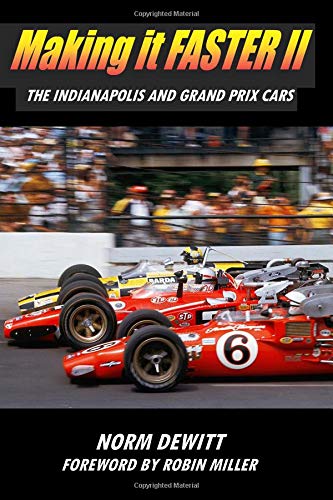
Making it FASTER II, The Indianapolis and Grand Prix Cars is the sequel to the #1 best selling book, Making it FASTER, Tales from the Endless Search for Speed. These are the stories of discovery by three generations of racers and designers who changed the state of the art forever. Tales of clever tricks and rule book manipulation in the ever-escalating contest between rule makers and loophole seekers, told by those directly involved in Indianapolis and Grand Prix racing. Their innovations dazzled us all.
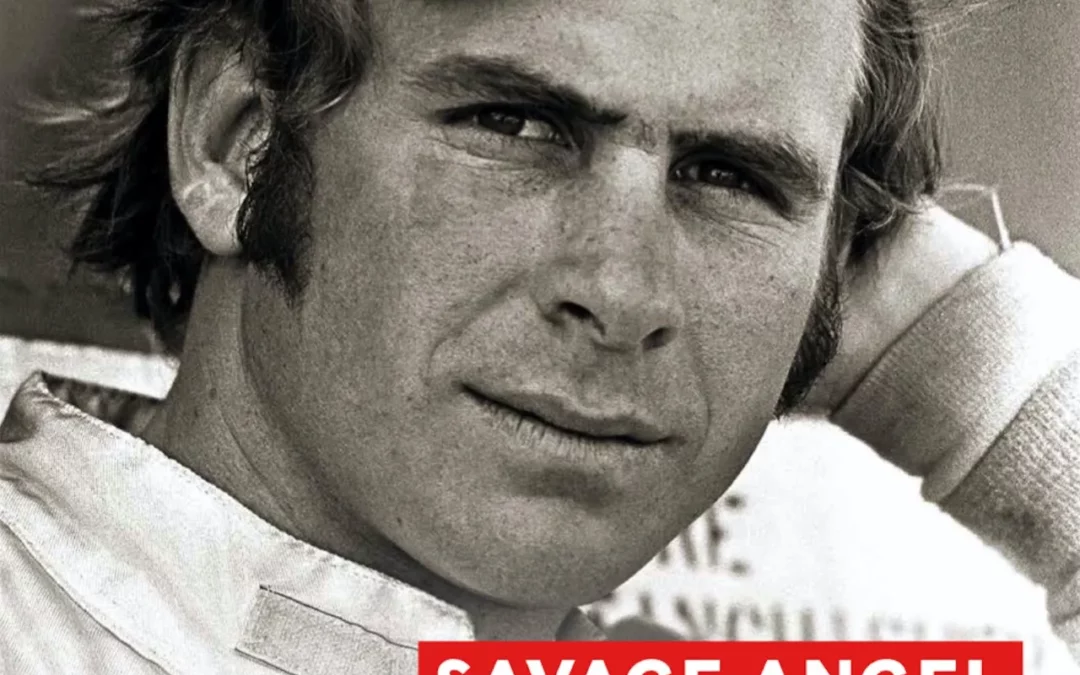
SAVAGE ANGEL author, Ted Woerner, was an 11-year old Swede Savage “super fan” sitting in the turn 4 grandstand at Indianapolis Motor Speedway on May 12, 1973. He watched and cheered as his hero broke the track record in time trials for the Indianapolis 500.
When race day finally came around more than two weeks later, he was sitting in his 6th grade classroom on a Wednesday afternoon in suburban Chicago. He listened to the rain-delayed race through a wired earplug connected to a transistor radio that he had brought to school that day. His excitement when Swede took the lead of the race turned to shock as he heard the news over the live radio broadcast that his hero had just been involved in a horrific crash only an hour into the race. He struggled to hide his emotions from his teacher. Swede Savage would die from complications from his injuries thirty-three days later.
“Soon after Swede’s death, I read that his wife was at the race, that she was pregnant, and that she witnessed his crash from the grandstand behind the pits,” recalls Ted. “I became immediately concerned about the well being of Swede’s wife and new baby, who by the time I read this book had already been born. I just couldn’t imagine how a child could enter the world under such circumstances.”
Through an improbable turn of events, Ted would finally meet Swede’s posthumous child, Angela Savage, as a grown adult over forty years later. A sacred friendship was formed between them, forged in the crucible of the same fiery tragedy. Now, several years after they first began the arduous and painful task of chronicling Swede’s life story and Angela’s complex and tumultuous life that followed, their book, SAVAGE ANGEL, is complete.
The book is a long overdue biography of Swede Savage. We finally get to know the man behind the windscreen as he pursued his childhood dream to win the Indianapolis 500. But the story doesn’t end with his death. It goes on to describe what it was like to be in the immediate family of a man whose lifetime passion was the world’s most dangerous profession. We feel their raw emotions as his final days unfolded in an Indianapolis hospital’s intensive care unit and learn how they attempted to go on with their lives after suffering such an immense and unexpected loss.
Through recent medical studies, it is now known that the baby girl born to Swede’s widow, Angela Savage, likely suffered transgenerational PTSD in her mother’s womb. Sheryl Savage not only witnessed her husband’s horrific crash from the grandstand, but also endured unimaginable stress as Swede struggled for life for another month thereafter. The book goes on to explain how the complex mental health issues, addictions, alcoholism, and general instability in Angela’s life, now appear to have been genetically hard-wired into her as a result of a statistically nearly impossible confluence of rare disorders and life experiences rarely found in a single person.
After being understandably vacant from the sport of auto racing her entire life, Angela Savage decided to accept an invitation from a small group of her father’s fans to come to the Indianapolis 500 for the first time in her life, forty-one years after the death of her father there. With additional support provided by the Indianapolis Motor Speedway, the trip was a life-changing experience. At Indy, she was showered with unconditional love. The embrace she felt from “the racing family,” and her unimaginably brave confrontation of the place where her father’s life ended, would change her life forever.
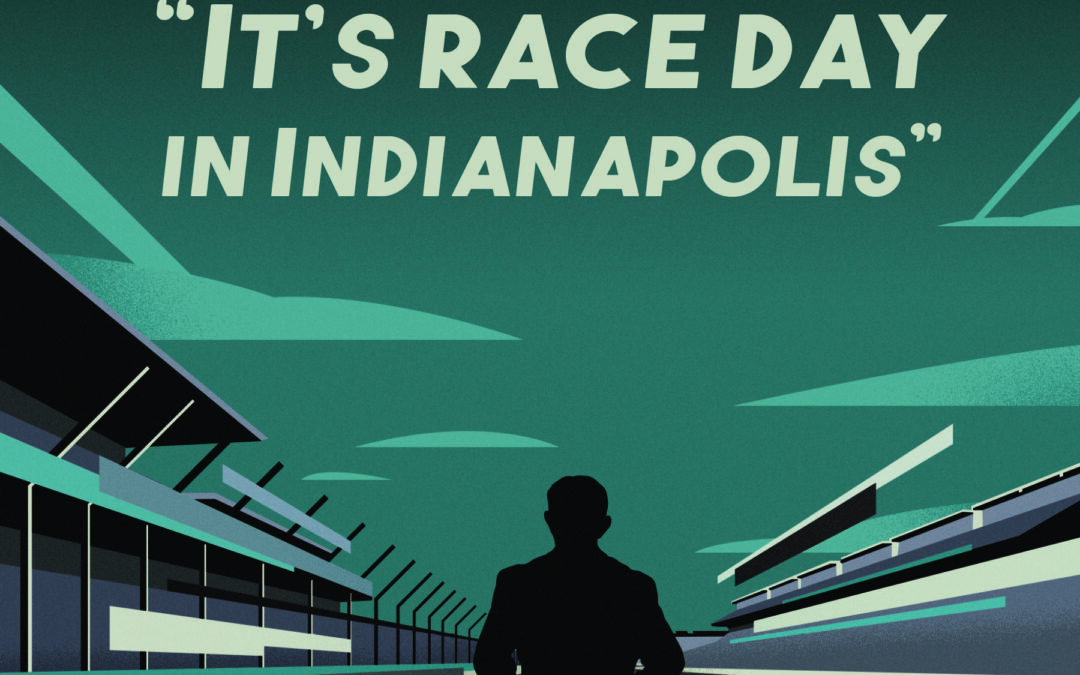
Live from the broadcast booth, Paul Page captured the excitement of 27 Indy 500 races, first as the “Voice of the Indy 500” for the radio broadcast and then as chief announcer for the ABC telecast. From his first race as a pit reporter to his semi-retirement in 2016, generations of fans have witnessed the Greatest Spectacle in Racing as told by Paul Page.
In a life uniquely shaped by the Indy 500, Page fell in love with racing and the Speedway as a teenager, and it became his obsession. After receiving his first press pass in 1965, Page became a fixture in Gasoline Alley, and a trusted friend and confidante to generations of drivers, mechanics and owners.
His rise to fame followed a relentless pursuit of his dream, overcoming many obstacles along the way: dropping out of college, the suicide of his mentor, and recovering from a harrowing helicopter crash. No matter the setback, he used every opportunity to learn the trade of broadcast journalism and the sport of motor racing.
In a career that spanned ABC, NBC, CBS, and ESPN, Page wore a headset for every imaginable race and contest: from Indy cars to drag racers, from the Olympics to the America’s Cup, and from the X-Games to Nathan’s Hot Dog Eating Contest. Page weaves the history, tradition, and lore of the Indianapolis Motor Speedway as he traces across six decades. He introduces the great personalities of the Speedway with many candid moments. He tells great stories from broadcast booths around the world, and slices of life as a young reporter in Indianapolis.
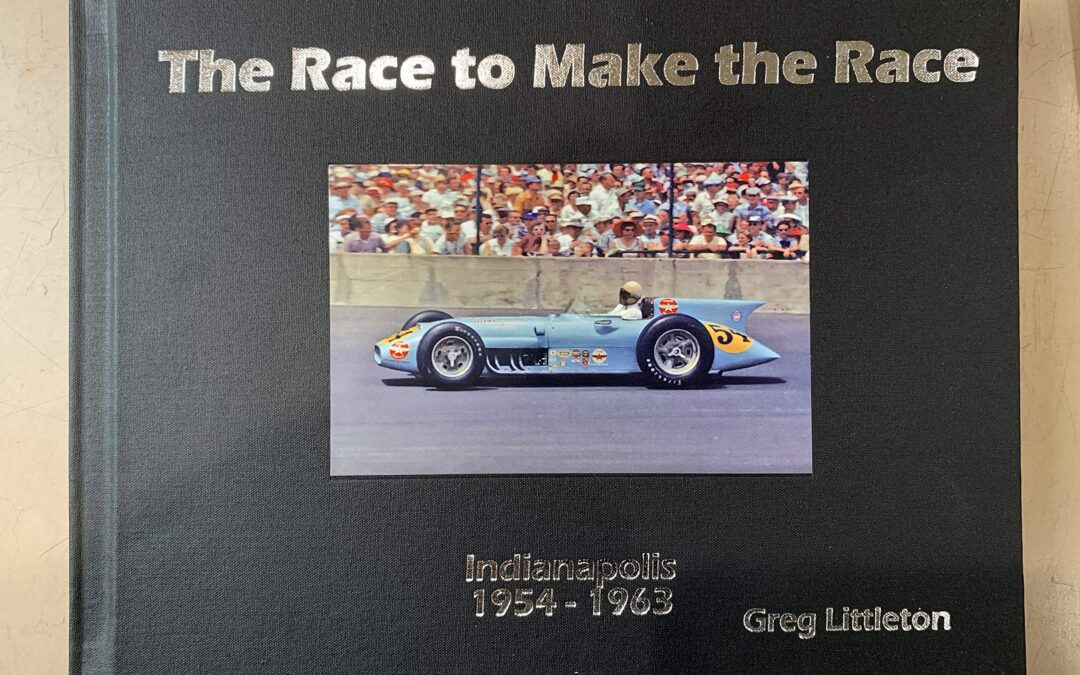
SIGNED
In his new book “The Race to Make the Race” Littleton chronicles a 10-year span (1954-1963) which was the peak roadster years at Indy and records what went on for every qualification attempt during this time period and each lap speed even if the attempt was yellow flagged. There is no mention of the races themselves as those results have been well-documented over the years.
Today’s 500 is lucky to attract 33 cars some years, but there was a time when the 500 really did have an actual Month of May and sometimes more cars went home than made the starting fields. Littleton’s book records by the actual time of day, weather conditions, attendance and all of the other happenings both on the track and in the Garage Area.
There are a lot of details in the book that you will never see anywhere else today. During the years in question the drama around the efforts to find speed just to qualify were often nearly as interesting as the actual race.
“While I was doing the Roadsters book I got the idea about doing a book on qualifications for the Indy 500,” said Littleton. “I got some qualifying information from the Speedway records when I was doing my first book. It was fun to do. I wanted to give the story on the successes and struggles each driver went through to try and make the Indianapolis 500 those years. The Bartholomew County Library was a big help in assisting me. They were able to get the microfilms from the Indiana State Library. I probably made 75 trips down to the local library to gather the information I needed.”
Littleton also mentioned two of the area’s standout racers at Indianapolis. Larry Crockett of Columbus who was the fastest rookie qualifier in 1954 and in the 500-mile race that year he ended up being the top finishing rookie over Pat O’Connor of North Vernon.
Littleton said Crockett, who died in a racing accident in Pennsylvania in 1955 right before he would have attempted to make his second Indianapolis 500, would have been a candidate to win the Indy 500.
“He was so young when he was starting out,” he said. “Nobody knows how his career would have turned out. If he had three or four years on him then I could have given you a better estimate on him. He was fast enough. There were some brave souls in 1954 and they said Larry Crockett was the best young driver in the United States.”
Like Crockett, Littleton gave his assessment on O’Connor who was killed in a first-lap accident in the 1958 race if he too could have won the Indy 500.
“Pat O’Connor definitely could have been an Indy 500 champion,” he said. “The legend of Pat O’Connor just keeps growing around here. You talk to guys and there is no doubt he was a natural. He was so smooth; everything came easy for him. He had the right head for it. He knew the days the car was good enough and the days it wasn’t.”
In documenting every lap of time trials during the 10-year span he chronicled there was one driver that stood out when writing the book was a young driver named Bob Scott in 1954.
“He had a good car in ’54 and on the fourth and final day of qualifying he was not in the show yet,” Littleton explains. “He jumped into a car that was not considered top-of-the-line equipment. He put three good laps together and they were going to be good enough to put him in the race, all he needed was one more consistent lap and he was in, but before he took the checkered flag he pulled into the pits and thus he didn’t qualify for the starting field. He apparently didn’t look at the flagman. He never did say why he pulled off.”
If Littleton had to pick a Mount Rushmore of Indy 500 champions his list would include: Bill Vukovich, A.J. Foyt, Wilbur Shaw and Al Unser Sr. Littleton also gave mention to 1963 winner Parnelli Jones.
“He was probably the least successful great race driver,” he said. “He would consistently beat Foyt in sprint cars, but he only won Indy once.”
On the sale last month of the Indianapolis Motor Speedway to Roger Penske, Littleton had this to say.
“Who else cares enough about racing and has the business acumen than Roger Penske?,” he asked. “He has everything that can make it work. Every decision he makes you may not like, but he has the best interest of the speedway in mind.”
Penske becomes the fourth owner of the track. The Hulman family had owned the track for 74 years.
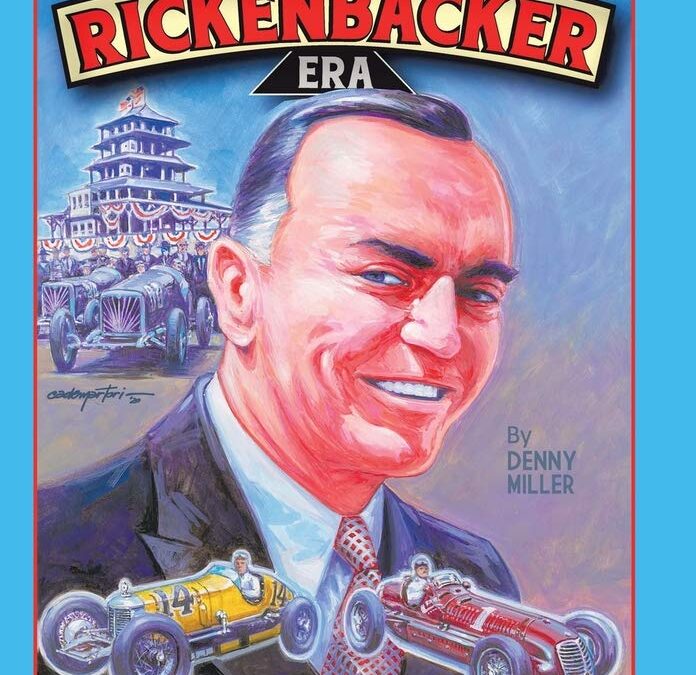
This Eddie Rickenbacker Era book is first and foremost an in-depth look of his ownership of the Indianapolis Motor Speedway from 1927-1945 and not intended to be another biography of Rickenbacker’s life. A list of books of Eddie’s military life or his ordeal about being lost 23 days in the South Pacific, which I highly recommend reading, follows. Throughout the book, I listed key dates and headlines in United States history, in politics, sports and entertainment, that is intended to serve as a point-of-reference timeline throughout the Eddie Rickenbacker Era. Don’t cringe on certain typos-I purposely capitalize the “R” in Race in various places as my way of showing reverence to the Indianapolis 500. Other grammar and punctuation irregularities are my humorous middle finger to those former “composition 101” profs who used so much red ink correcting my themes.
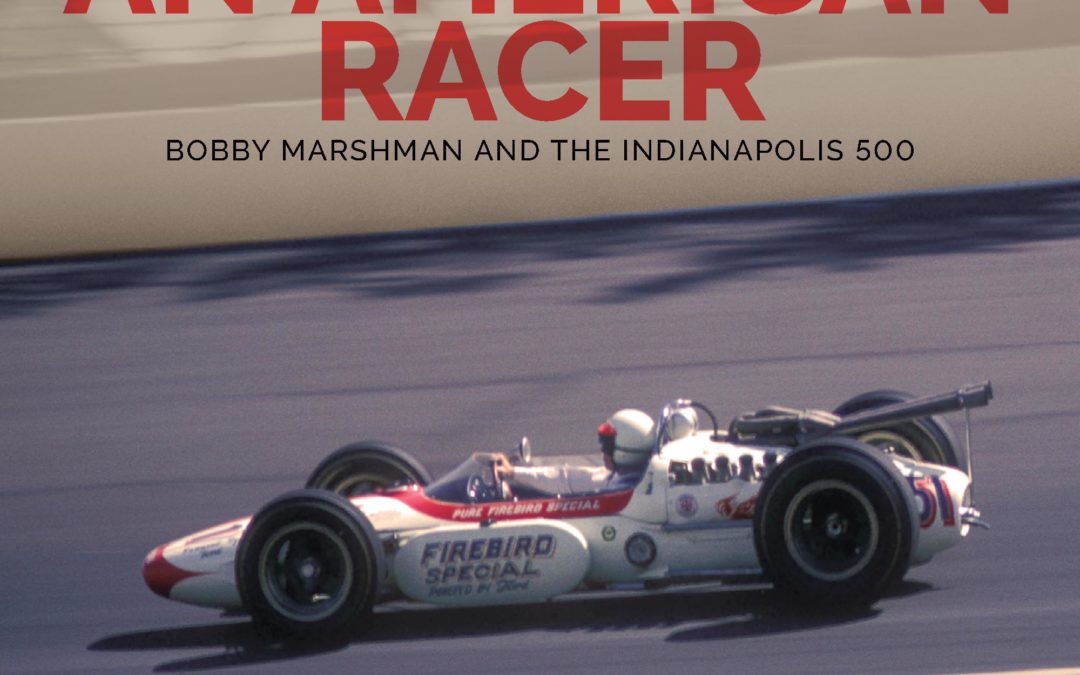
Michael Argetsinger’s new biography of Bobby Marshman
In a fine narrative of Marshman’s meteoric rise to the top of American championship racing, author Argetsinger captures the amazing career of one of America’s greatest talents behind the wheel, whose life was sadly cut short by a tragic testing accident at Phoenix in November of 1964.
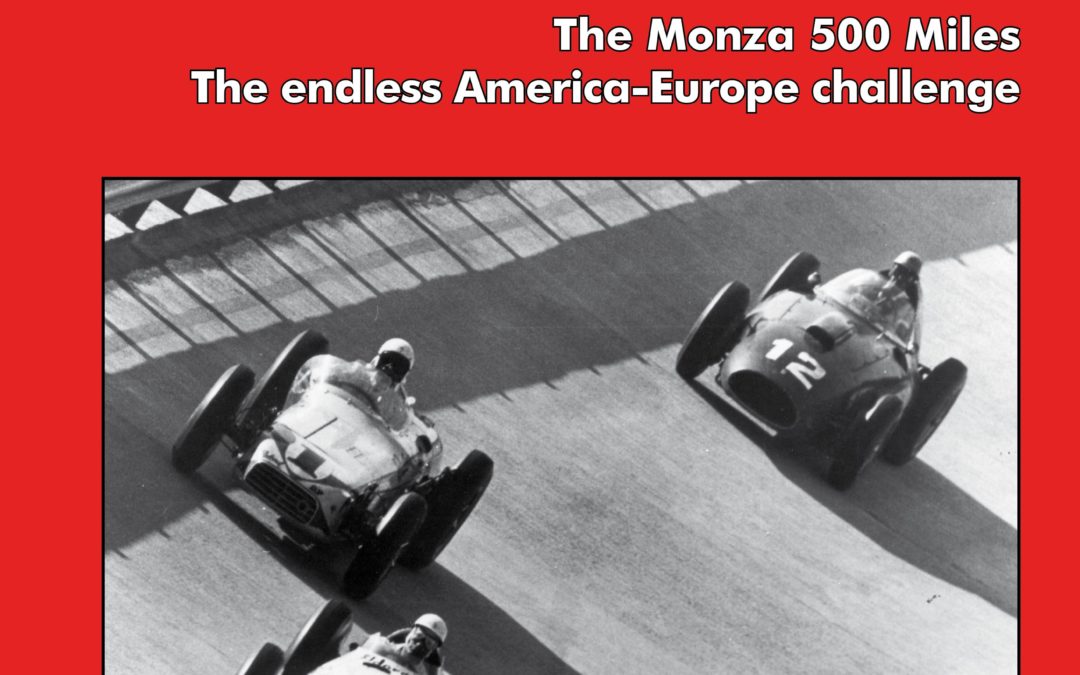
When the Americans came to Monza to show Europeans how to race on oval tracks. When Monza hosted the fastest races in history. When the European drivers first refused the challenge and then, driving Ferrari, Maserati, Jaguar, were sonorously beaten. It’s an intriguing history of 1957 and 1958, that this books uncovers for the first time, hence its title, “Monzanapolis”, synthesis of the two worlds, Europe and America, and their most famous race tracks: Monza and Indianapolis.
The challenge among drivers, cars, technologies and mindsets on the two sides of the Atlantic ocean began in 1905 and for 50 years had plenty of interesting events: the Europeans went in America to win (and did it two times) and the Americans came to France and Italy (winning only once). All these races, at their time very important and famous, but nearly forgotten today, are described in detail in this book.
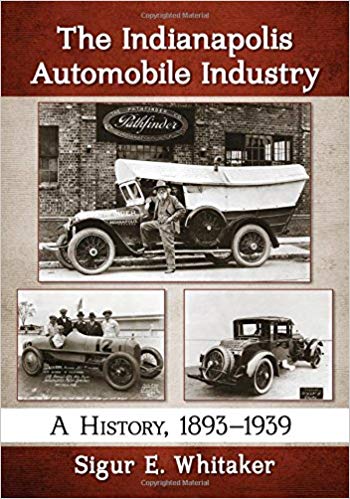
In 1893, Indianapolis carriage maker Charles Black created a rudimentary car–perhaps the first designed and built in America. Within 15 years, Indianapolis was a major automobile industry center rivaling Detroit, and known for quality manufacturing and innovation–the aluminum engine, disc brakes, aerodynamics, superchargers, and the rear view mirror were first developed there. When the Indianapolis Motor Speedway opened in 1909, hometown manufacturers dominated the track–Marmon, Stutz and Duesenberg. The author covers their histories, along with less well known contributors to the industry, including National, American, Premier, Marion, Cole, Empire, LaFayette, Knight-Lyons and Hassler.

In a nation that worships the automobile for the freedom, style, and status that it confers, the Indianapolis 500, run on or near Memorial Day eighty-seven times, is an annual rite of passage celebrating Americans’ love affair with speed. Indy recounts the drivers (677 men and 3 women) who have gone to Indianapolis in the past ninety-five years to live their dreams, staking their lives on the outcome. It highlights the faces in the crowd: hardworking Americans, tinhorn celebrities, hookers, movie stars, gate-crashers, and five American presidents. Terry Reed focuses his narrative on the track’s four quarter-mile-long turns, each the site of triumphs (including those of such multiple winners as Billy Vukovich, A. J. Foyt, and Helio Castroneves); grisly deaths (at least sixty-six, including three unrelated men of the same unusual last name who died in the same turn but in different decades); and bizarre heroics (like the sans souci French driver who downed champagne throughout the 1913 Indy 500 and still won). Reed also examines Indy’s confluence of racing and aeronautics (World War I flying ace Eddie Rickenbacker once owned the track) and the impact upon the event of such forces as segregation, gender politics, food, fads, publicity stunts, world-class partying, and tasteless pop culture. Indy takes readers on an entertaining, full-throttle ride through the history of one of the world’s most famous races and one of America’s most hallowed rituals. It is the definitive account of the crown jewel of American motor
U.S.S. Indianapolis
Indianapolis 500 Rankings
The British at Indianapolis

Among the engineers fueling the rapid rise of the automotive industry at the dawn of the 20th century was James Allison, a fountain pen maker who joined with Carl G. Fisher in 1904 to found Prest-O-Lite, an early manufacturer of the power source for automotive headlights. This biography tracks Allison’s involvement in the Indianapolis 500, which he cofounded with Fisher and two others, as well as his machine shop’s construction of the Liberty engine, the first mass-produced aircraft engine, and also the V1710, the workhorse of World War II military aircraft. Through his unique ingenuity and perseverance, Allison created a legacy that still resonates today at the Indianapolis 500, Rolls-Royce, and Allison Transmission.
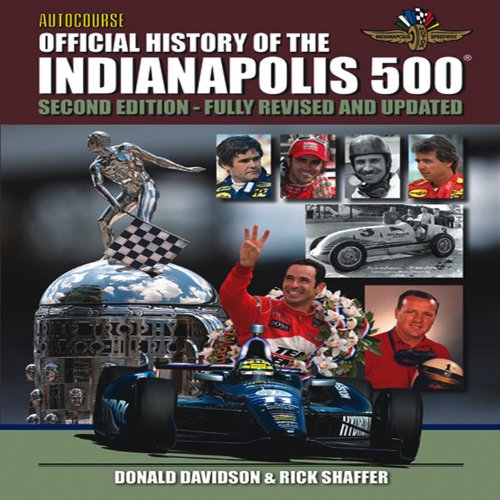
THE Indianapolis “500” is much more than merely the best known automobile race in the world. It is a cherished time-honored institution with a glorious history dating back more than one hundred years.
Known to most as, quite simply, “The 500,” it has been held every year since 1911, the only exceptions being 1917-18 and 1942-45, during the periods when America was involved in the two world wars.
Steeped in tradition, it has meant many things to many people and has played an enormous role in the lives of human beings, perhaps even more so for the spectators and devotees than for the participants themselves.
For over half a century, Memorial Day meant either trekking to the track or else ensuring that whatever other activity was planned for the day, a radio would always be within earshot. In more recent decades, settling down in front of the television has been added to the equation, while it is now the Sunday of Memorial Day weekend on which the extravaganza takes place, rather than on Memorial Day itself. But the feeling is the same.
For the participants, it has been a nearly 100-year saga of dreams, innovation, ingenuity, bravery, triumph, and tragedy. Paupers became millionaires, young men from small towns and broken homes became international celebrities, and regrettably, some of them gave their lives.
The “500” has endured world wars, depressions, recessions, political strife, and negative journalism, and yet it continues to draw massive passionate and emotional crowds, whose loyalty is rewarded with never-to-be-forgotten moments such as the finishes of 2006 and 2011, when Dan Wheldon snatched victory on literally the final turn.
This, then, is the story of the Indianapolis 500 and how it came to be. This is the story of more than 100 editions of the race, interspersed with a look at some of the compelling personalities, some little-known facts, an attempt to document the origins of some of the traditions, and perhaps even to dispel a few myths.
From Harroun to Franchitti, it’s all here…
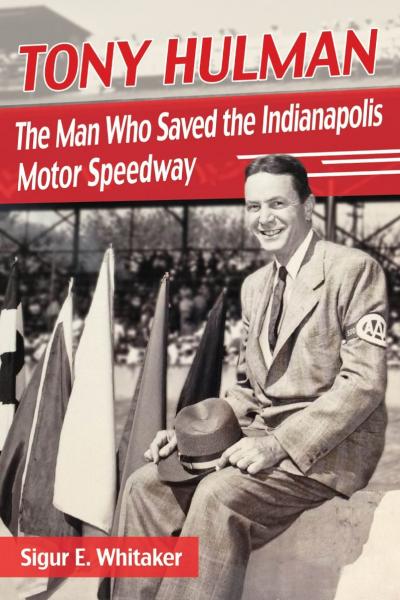
Almost unknown when in 1945 he purchased the Indianapolis Motor Speedway and its famous race, Tony Hulman soon became a household name in auto racing circles. He is credited with not only saving the Speedway from becoming a residential housing development but also with re-invigorating auto racing in the United States. Until his purchase of the Speedway, Hulman had not been involved in auto racing; he was the CEO of Hulman & Company, a wholesale grocer. An astute businessman, Hulman made Clabber Girl Baking Powder a national brand and successfully led the reorientation of the family fortunes to include a range of businesses including a beer company, a Coca-Cola franchise, a broadcast empire, and real estate and gas companies. This biography of Hulman focuses on his many ventures, including the Indianapolis Motor Speedway and Indianapolis 500 and his philanthropy.
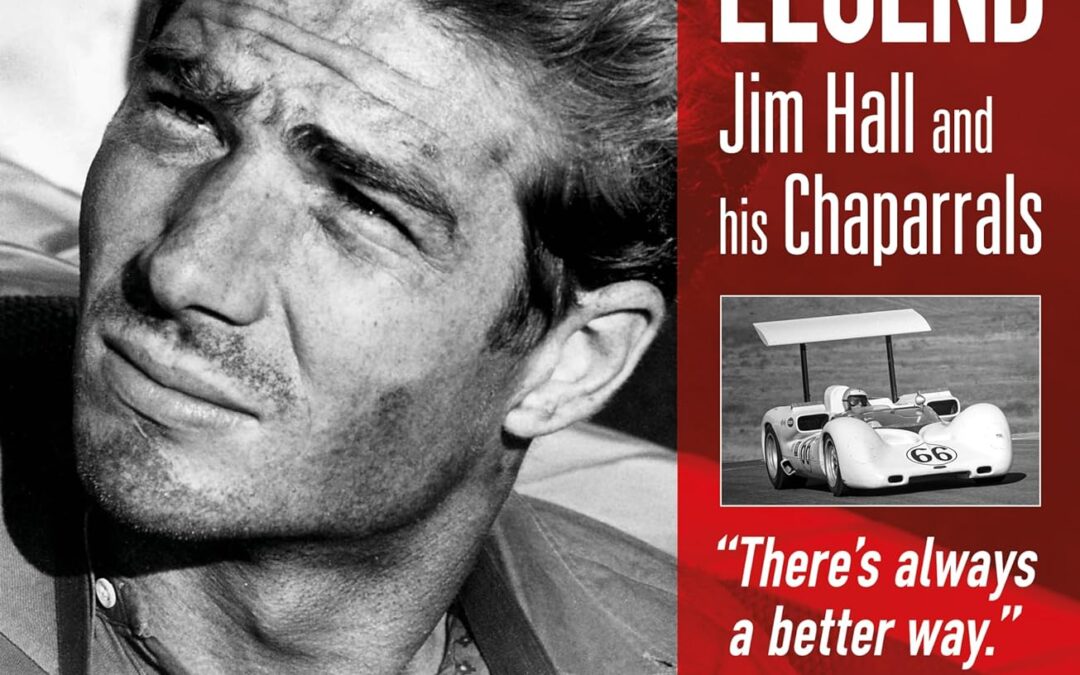
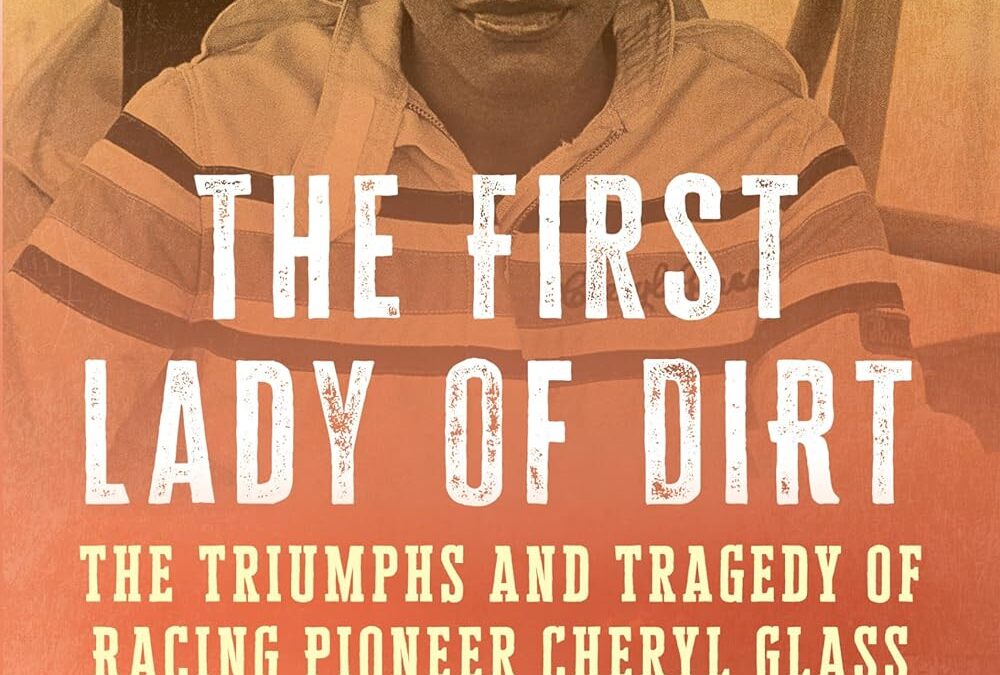
The incredible, little-known story of the first successful Black woman in the sport of auto racing in the United States.
Early in her career, Cheryl Glass looked like a lock to become the first Black woman to compete in the Indianapolis 500. From racing quarter midget cars at ten years old to Indy Lights in her twenties, Cheryl was on her way towards a winning career in auto racing.
In The First Lady of Dirt: The Triumphs and Tragedy of Racing Pioneer Cheryl Glass, Bill Poehler tells Cheryl’s full story for the first time. He recounts how Cheryl rapidly became the first successful Black woman in the sport, yet frequently encountered racist and sexist taunts from other drivers and fans throughout her career. While appearing to have it all—talent, ambition, looks—she faced many challenges on and off the track and her life soon spun out of control.
Featuring exclusive interviews with Cheryl’s mother, friends, and competitors, The First Lady of Dirt takes you behind the scenes and in the driver’s seat of Cheryl’s life. Poehler, an amateur racer himself, places the reader at the track, smelling the dirt and fumes, hearing the roaring engines and crashing metal, and feeling Cheryl’s joy and pain. It’s the inspiring story of a racing pioneer and a tragic tale of the pressures that are often hidden from public view until it’s too late.
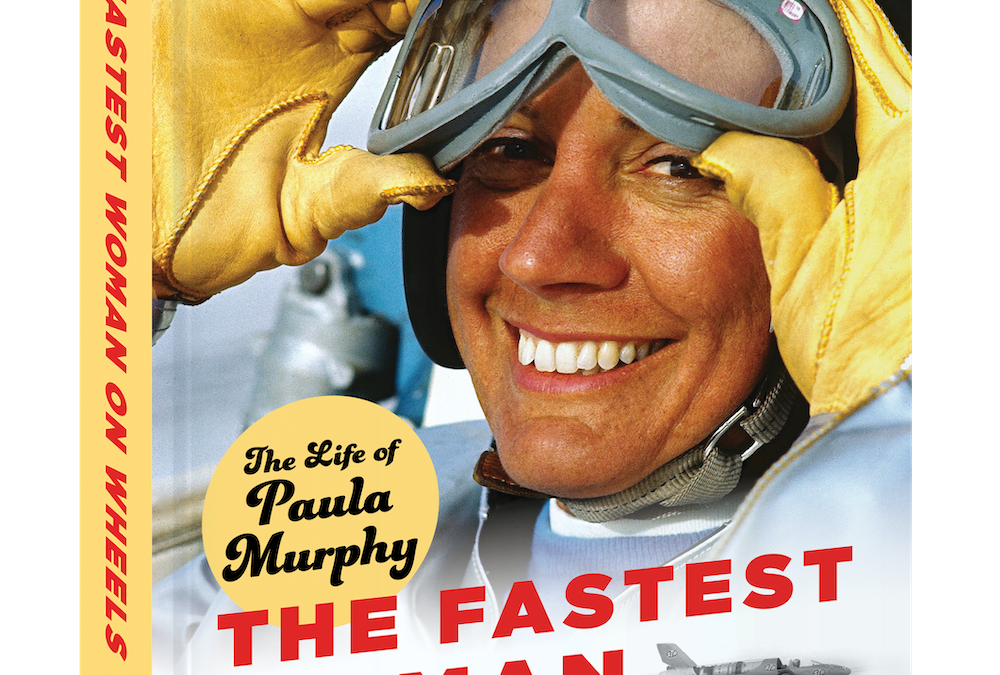
A fearless pioneer and a versatile and gifted driver, Paula Murphy was the first woman to pilot a jet car to a Bonneville Salt Flats speed record, the first woman to make laps at famed Indianapolis Motor Speedway, and the first woman to secure an NHRA Funny Car license. Throw in driving a Pontiac Sunbird literally around the world, nearly dying at the helm of a rocket car, and scoring closed-course speed records at NASCAR’s famed Talladega Superspeedway behind the wheel of cars driven by both Richard Petty and Fred Lorenzen, and you might be starting to scratch the surface of her incredible life.
Author Erik Arneson worked directly with Murphy and some of the biggest names in motor sports to dive deep into her story and relay to the world the impact this single mother from Ohio had on the world of racing. If you find the list of feats above impressive, add the Baja 1000, Mobil Economy Runs, Monaco, Union/Pure Oil Performance Trials, as well as high-speed stunts on horses, sailboats and a snowmobile and you’re starting to get close. Jump in—The Fastest Woman on Wheels is one hell of a ride.
